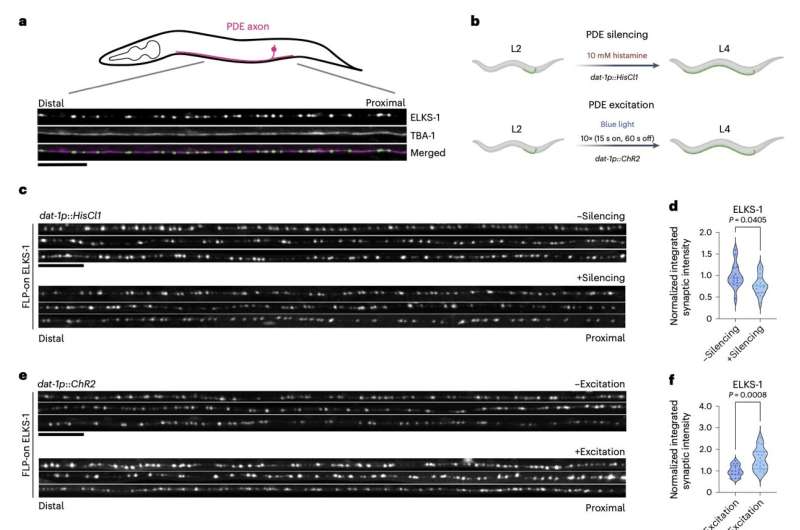August 31, 2024 feature
This article has been reviewed according to Science X's editorial process and policies. Editors have highlighted the following attributes while ensuring the content's credibility:
fact-checked
peer-reviewed publication
trusted source
proofread
Study outlines an activity-regulated genetic program underlying the formation of synapses during development

Synapses are junctions via which neurons communicate with each other or with other types of cells. Synapses are formed throughout the course of a person's life, yet their strength and numbers change over time, a phenomenon known as synaptic plasticity.
While past neuroscience studies have shed much light on the composition and function of synapses, the genetic mechanisms that orchestrate their formation remain poorly understood. Experimental findings suggest that the activity of neurons plays a key role in the formation of synapses, yet the interaction between this activity and genetic mechanisms remains widely unexplored.
Researchers at Stanford University, Stony Brook University and other institutes in the U.S. recently carried out a study aimed at filling this gap in the literature, by examining dopaminergic neurons from the multi-cellular organism Caenorhabditis elegans. Their paper, published in Nature Neuroscience, unveils a robust genetic program that could underlie the formation of synapses via neuronal activity.
"Although the molecular composition and architecture of synapses have been widely explored, much less is known about what genetic programs directly activate synaptic gene expression and how they are modulated," wrote Callista Yee, Yutong Xiao and their colleagues in their paper. "Using Caenorhabditis elegans dopaminergic neurons, we reveal that EGL-43/MECOM and FOS-1/FOS control an activity-dependent synaptogenesis program."
Yee, Xiao and their colleagues proposed the idea that synaptic genes are controlled by two different mechanisms. One of these consists of programs that regulate gene expression patterns during development, while the other is dependent on neuronal activity.
Their recent study was aimed at better understanding how these two different mechanisms converge to support the formation of synapses during development. To do this, they carried out experiments on Caenorhabditis elegans, a small roundworm that is often used as a model organism in biological research.
The researchers modulated the activity of dopaminergic neurons in this organism using optogenetic and chemogenetic techniques, to then observe how this impacted the expression of presynaptic proteins. The results they collected suggest that neuronal activity played a key role in the formation of synapses.
Subsequently, the team set out to identify neuronal activity-regulated genetic programs that drive the formation of synapses. This led them to uncover two genes/proteins that control an activity-regulated process through which new synapses are formed, namely EGL-43/MECOM and FOS-1/FOS.
"Loss of either factor severely reduces presynaptic protein expression," wrote the researchers. "Both factors bind directly to promoters of synaptic genes and act together with CUT homeobox transcription factors to activate transcription. egl-43 and fos-1 mutually promote each other's expression and increasing the binding affinity of FOS-1 to the egl-43 locus results in increased presynaptic protein expression and synaptic function. EGL-43 regulates the expression of multiple transcription factors, including activity-regulated factors and developmental factors that define multiple aspects of dopaminergic identity."
The recent work by this research team demonstrates a mechanism through which neuronal activity modulates genetic programs that control synapse formation in Caenorhabditis elegans. While this mechanism has so far only been observed in dopaminergic neurons, the team believes that similar ones also exist in different types of neurons.
In their next studies, they plan to study how the genetic program they uncovered is regulated over time. In addition, they could explore how this program interacts with other molecular processes to support the expression of synaptic genes.
More information: Callista Yee et al, An activity-regulated transcriptional program directly drives synaptogenesis, Nature Neuroscience (2024). DOI: 10.1038/s41593-024-01728-x
© 2024 Science X Network


















